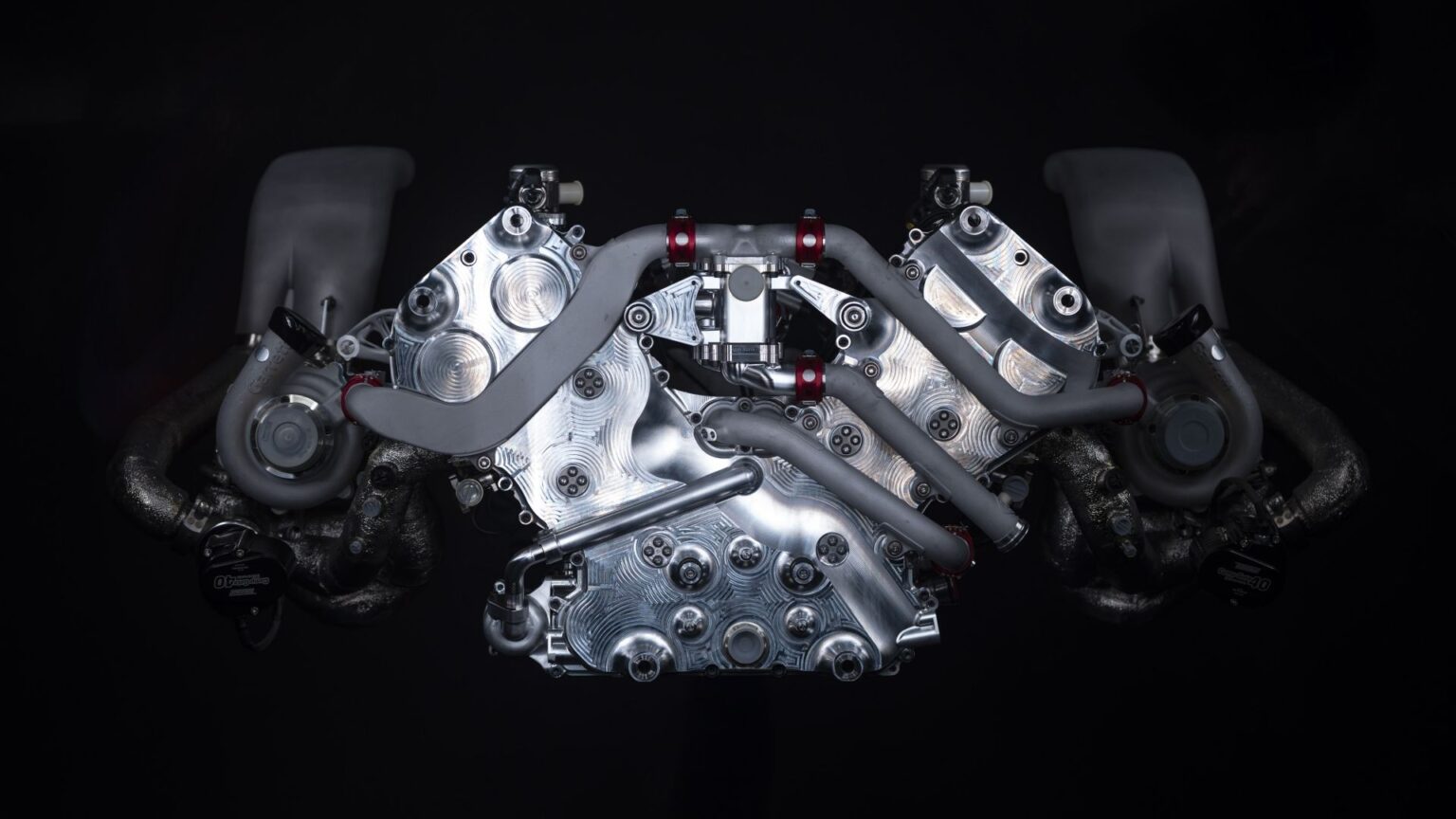Last week, Genesis Magma Racing, the motorsports division of this South Korean luxury automotive brand unveiled its new GMR-001 hypercar at the New York Auto Show. This machine is an LMDh endurance prototype that’s been created to compete in the FIA World Endurance Championship and the IMSA SportsCar Championship. Ultimately, Genesis is aiming to compete in the legendary 24 Hours of Le Mans. Of course, before this exotic-looking and fiery-orange racing machine can start crushing the competition, it needs a powertrain, and that’s exactly what engineers are working on now.
Building A Race-Ready Powerplant
An exciting new twin-turbocharged V8 is under development by the speed freaks at Hyundai Motorsport in Frankfurt, Germany of all places. Despite the GMR-001’s exotic looks and potentially world-beating performance, this engine has more pedestrian roots than one might expect, as it is not a clean-sheet design. Essentially two Hyundai Motorsport WRC challenger four-cylinder units fused together at the crankshaft, this new V8 shares about 60 percent of the components found in its four-cylinder forerunner, and that is not a bad thing.
Using production engine designs in motorsports is nothing new. Ford, for instance, won Le Man several times in the mid-1960s using overhead-valve V8s derived from mass-produced offerings.
Regardless of the heritage, “It’s a proper race engine, so it’s a very good base for developing an engine for WEC. Rallying is a sort of endurance race, so for an engine to [compete in] the 24 Hours of Le Mans, it’s a good place to start from,” said Hyundai Motorsport technical director François-Xavier Demaison in a media release. “The inline-four engine is a very, very sophisticated, very efficient engine,” the leader added.
Bringing this Genesis Magma Racing car one step closer to reality, that new V8 recently completed an important milestone on the road from development center to racing circuit: The engine has awoken, been successfully run for the very first time back in late February. Reportedly, this first fire-up went exactly as planned, which is always good news. You never want to see a connecting rod punch a hole in the block; that would be a bad day at the office.
Under development since last June, this new V8’s design work was completed in just four months, another benefit of using a few existing, off-the-shelf components. “The assembly of the first engine always takes a bit more time, as we pay extra attention to the details because we don’t know the engine,” explained Julien Moncet, Hyundai Motorsport’s head of powertrain in a media release. “We had to learn and build the documentation together. It took about three or four weeks, but we completed the first fire-up exactly as scheduled.”
Now For The Hard Part
With the core design, engineering, machining, and assembly work completed, and with this engine up and running, now the hard part begins. This V8 must undergo rigorous testing to ensure it delivers race-winning horsepower and torque, but not only that, this beast must also go the distance. You can’t compete in the 24 Hours of Le Mans with a powerplant that calls it quits after just 12 hours of use.
“After the first crank and the first revs in a steady state, we will progressively add more heat into the system, performing long runs,” noted Cyril Abiteboul, the team principal of Genesis Magma Racing. “Then with different dynos, we can test in a more dynamic way, reproducing closer the cycles that the engine will do around a race track like Le Mans. We can test equipped to the gearbox and the hybrid system until we have the full powertrain.”
All this news is undeniably exciting, but unfortunately, no horsepower or torque figures for this new engine have been shared, nor does it appear that Genesis has disclosed the displacement of this powerplant. The automaker says, however, that additional technical details about this V8 will be released as development progresses, so stay tuned for updates.
Read the full article here


